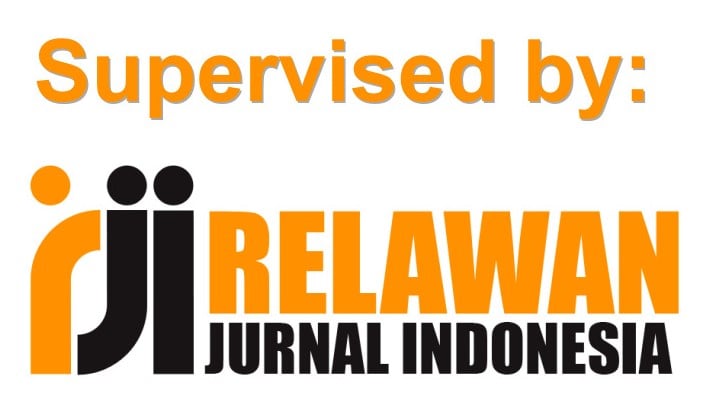Hubungan Antara Kemampuan Adaptasi Terhadap Kebisingan Dengan Stres Kerja Karyawan
DOI:
https://doi.org/10.18592/jsi.v5i1.1356Keywords:
Kemampuan adaptasi terhadap kebisingan, Stres kerjaAbstract
Today stress has become a very important management issue in the industrial world. Nearly everyone experiences stress with respect to work. No matter how small the work stress that emerges must be addressed so as not to enlarge which ultimately can harm the organization and employees. One source of work stress is the noise that is not desired by the ear because it can be annoying and irritating. But the noise can be responded differently by each individual according to their adaptability. If the individual is less able to adapt to the noise then he will tend to experience stress.This study aims to determine the relationship between the ability to adapt to noise with employee work stress. This research was designed using a quantitative and correlational approach. Population of this research is employees of production of PT. Hendratna Plywood totaling 357 people. In sampling, the researcher used Random Sampling Technique by taking 60 employees. In this study the researchers used pure try out. The result of try out scale of ability of adaptation to noise obtained 23 valid items from 30 items presented. While on work stress scale obtained 55 valid items from 72 items.The results showed that 32 subjects (53.3%) experienced high work stress and 28 subjects (46.6%) experienced low work stress. It also found that 37 subjects (61.6%) had good adaptability to noise and 23 subjects (38.3%) had poor adaptability to noise. The result of data analysis is known that there is a significant negative relationship between the ability of adaptation to noise with employee work stress shown by correlation coefficient r = - 0,359 and p = 0,005. This means that if employees have good adaptability to noise then low job stress, otherwise if employees have poor adaptability to noise then high job stress. From this it can be seen that the ability of adaptation to noise gives effective contribution of 12,88% (r² = 0,1288) to work stress, while the rest 87,12% influenced by other factor.References
A. S Munandar. Psikologi Industri dan Organisasi. Jakarta: Penerbit Universitas Indonesia (UI-Press), 2001.
Anoraga, Pandji. “Psikologi kerja.” Jakarta: PT. Rineka Cipta, 1992.
ARDANI, Tristadi Ardi, dan Sri Rahayu Partosuwido. “Hubungan antara persepsi tentang keselamatan kerja dan kesehatan kerja dengan stres kerja pada pekerja di Pertamina Unit Pengolahan (UP) VI Balongan Indramayu Jawa Barat.” Jurnal APIO, 2005.
E. Poerwanti. Dimensi-dimensi Riset Ilmiah. Malang: UMM Press, 2000.
Evans, Gary W, dan Dana Johnson. “Stress and open-office noise.” Journal of applied psychology 85, no. 5 (2000): 779.
F.N. Kerlinger. Asas-asas Penelitian Behavioral. Yogyakarta: Gadjah Mada University Press, 2003.
M. Lucas, dan K. Wilson. Memelihara Gairah Kerja. Jakarta: Arcan, 1992.
National Safety Council. Manajemen Stres. Jakarta: EGC, 2004.
Oman Sukmana. Dasar-dasar Psikologi Lingkungan. Malang: Bayu Media & UMM Press, 2003.
Saifuddin Azwar. Reliabilitas dan Validitas. 4 ed. Yogyakarta: Pustaka Pelajar, 2003.
———. Sikap Manusia. Teori dan Pengukurannya. 2 ed. Yogyakarta: Pustaka Pelajar, 2003.
S. Nahhari. “Tingkat Stres Kerja pada Karyawan Unit Pengolahan V Pertamina Balikpapan.” Skripsi, Fakultas Psikologi Universitas Muhammadiyah Malang, 2003.
Sarlito W. Sarwono. Psikologi Lingkungan. Jakarta: PT. Gramedia Widiasarana Indonesia, 1995.
S.P. Robbins. Perilaku Organisasi. Jakarta: PT INDEKS Kelompok Gramedia, 2003.
Suharsimi Arikunto. Prosedur Penelitian Suatu Pendekatan Praktek. Edisi revisi IV. Jakarta: PT. Rineka Cipta, 2002.
Tulus Winarsunu. Statistik dalam Penelitian Psikologi Pendidikan. Malang: UMM Press, 2002.
Downloads
Published
How to Cite
Issue
Section
License
Authors who publish with this journal agree to the following terms:
- Authors retain copyright and grant the journal right of first publication with the work simultaneously licensed under a Creative Commons Attribution License that allows others to share the work with an acknowledgment of the work's authorship and initial publication in this journal.
- Authors can enter into separate, additional contractual arrangements for the non-exclusive distribution of the journal's published version of the work (e.g., post it to an institutional repository or edit it in a book), with an acknowledgment of its initial publication in this journal.
- Authors are permitted and encouraged to post their work online (e.g., in institutional repositories or on their website) before and during the submission process, as it can lead to productive exchanges, as well as earlier and greater citation of published work (See The Effect of Open Access).





















